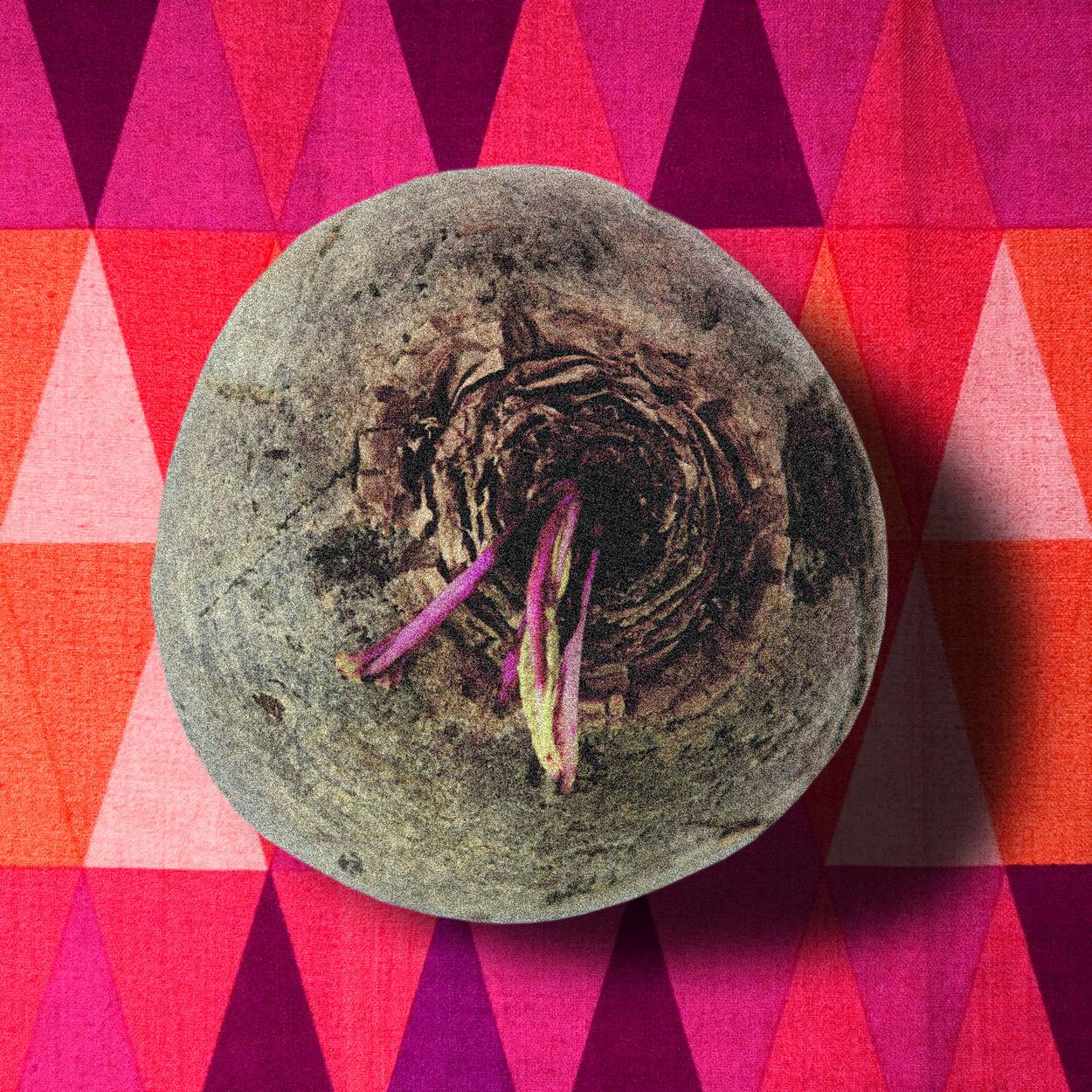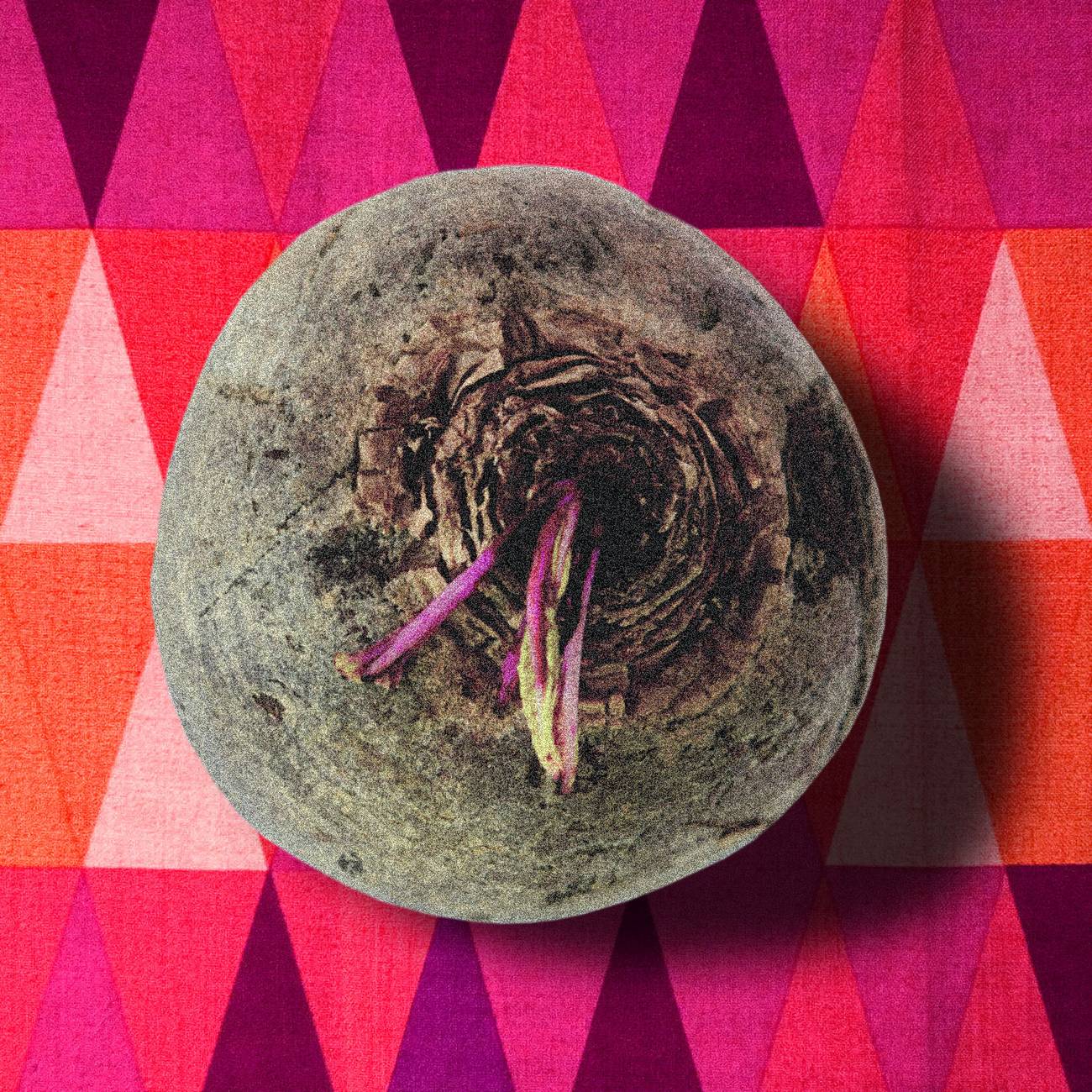The Beet Goes On
How a humble root became a staple in Jewish cooking

Inset photo: Christina Deravedisian

Inset photo: Christina Deravedisian

Inset photo: Christina Deravedisian

Inset photo: Christina Deravedisian
Fifteen centuries ago, in the heart of Babylonia (modern-day Iraq), a riveting written exchange took place between Jewish Talmudists about the rules over carrying a particular raw vegetable during Shabbat.
“One may not establish an eruv with raw beets,” declared Rav Hamnuna, citing Rav Ḥisda. “Raw beet kills a healthy person.”
In rebuttal, Rav Ḥisda asserted, “A cooked dish of beets is beneficial for the heart, good for the eyes, and all the more beneficial for the intestines.”
As a final arbiter in the dispute, Abaye stipulated that this applies specifically when “the dish sits on the stove and makes a tukh tukh sound,” signifying thorough cooking.
This vehement halachic debate over the ramifications of a seemingly inconspicuous vegetable seems particularly fascinating, even excessive, given that during this period, most prominent ethnic groups exhibited little passion for its consumption in comparison to the Jewish community.
Beets (Beta vulgaris) originated first from the sea beet that grew wild alongside the shorelines of the Mediterranean. Archeological remnants provide evidence of the plant from primeval epochs. Remnants have been excavated from the third dynasty Saqqara pyramid at Thebes, Egypt, dating back to the 2600s BCE. Ancient Greeks cultivated beets but consumed only the leaves in salads or wrapped fish, while the roots served as a medicinal plant and sometimes to worship Apollo in his temple at Delphi by offering them on a silver platter.
In Evolution of Root Morphology in Table Beet: Historical and Iconographic, authors Irwin L. Goldman and Jules Janick write: “Ancient Greek, Roman, and Egyptian civilizations described the use of vegetable beet in their cuisines and medicinal remedies, but most of these recipes focused on beet leaves. These sources indicate that beet was primarily a leaf crop and not widely consumed as a root vegetable.”
Beetroots are mentioned in the Septuagint, the Greek rendition of the initial five books of the Hebrew Bible and various prophetic texts. The Septuagint was crafted in Ptolemaic Egypt during the third century BCE to cater to the Greek-speaking Jews residing in the region. However, the reference to beetroot within the Septuagint is thought to be a linguistic mistranslation of a “trapped gazelle” or possibly an antelope as a “half-boiled beet.”
“The book of Isaiah doesn’t ever mention beets. But the Greeks translated a trapped gazelle as a half-boiled beet, which I think is fascinating,” said Goldman, professor of horticulture at the University of Wisconsin-Madison. “These findings tell you something about the food of ancient Greece; a half-boiled beet was food that people ate, and it was kind of like a limp, a thing has run out of energy. So regardless of the circumstances surrounding the mistranslation, the term’s appearance presents robust evidence supporting the consumption of beet as a culinary vegetable during this era.”
Interestingly, the metaphor of a “boiled beet” found wider application beyond biblical translations. In fact, it was used as an expressive simile in ancient literature. For example, Catallus, an esteemed Latin poet from the first century, evocatively utilized this “boiled beet” metaphor to describe male sexual impotence.
In tracing the roots of the beet’s culinary history, an intriguing correlation emerges between the earliest terminologies used to describe the vegetable and the cooking method of boiling. Boiling may have been the primary method for cooking the root during this period of antiquity. These connections imply that beets were likely a primary component in soups, stews, or perhaps a standalone boiled delicacy. This theory is reinforced by the etymology of the Hebrew word for beet: selek, which translates as “boil down.” The Arabic language further bolsters this hypothesis, as its term for a thoroughly boiled, tender vegetable is silqa, a derivative of the Hebrew word.
A testament to the enduring culinary significance of beets lies nestled in the text of the Talmud, a central text in rabbinical Judaism, from the seventh century CE. Rabbinical scholars’ frequent references to boiling indicate its importance as a cooking technique and kashrut adherence. Even residual water from the vegetable symbolizes its cleanliness and healing properties. One sage, Shmuel, recommended washing extensively in beet water, in which beets have been boiled, as a remedy for skin sores.
In Tractate Shabbat, an intriguing recipe surfaces as a response to the thought-provoking question, “With what does one delight in the day of Shabbat?” The answer—a simple yet flavorful concoction of a dish of beets, a large fish, and heads of garlic—demonstrates this humble root vegetable’s continuous use and appreciation and serves as evidence of the culinary value in Jewish cuisine.
What is it about beets that makes it a Jewish staple that still endures today?
The crop migrated from Southern Europe to North Africa and Northern Europe. It wasn’t until the 1500s, however, that humans began selecting a swollen root that could be stored through the winter and used as livestock feed. This selective process led to the development of the pigmented, conical table beet familiar to us today—where we primarily consume the root, rather than the leaves.
Since there’s no substantial evidence the modern spherical beet was established until the early 16th century, many of the staple Jewish beet dishes we know today were developed or embraced by their respective communities after that. But for the past 500 years, beets’ versatility has made them a preferred choice for the cuisines of many Jewish ethnic groups. Azhkenazim, Mizrahim, and Sephardim have equally incorporated the vegetable into their dishes for many centuries, whether in kubbeh selek (an Iraqi Jewish filled-dumpling soup), or as a halachic substitute for the shankbone for vegetarian Jews at Passover. Sephardim use the root in their Rosh Hashanah Seders, as the word selek is similar to siluk, the Hebrew word for “remove.” Hence, beets symbolize the removal of the previous year’s obstacles and enemies.
And then there is borscht, a ubiquitous soup among Ashkenazi Jews. Originating in Ukraine between the fifth and ninth centuries CE, borscht was initially made from cow parsnip, a common wild plant native to Central Asia and Eastern Europe. A simple staple of peasant fare, the soup spread widely across Eastern Europe by the 15th century. However, it was not until the 16th century that beets found their way into the iconic dish. The recent availability of domesticated, succulent, swollen-rooted table beets catalyzed this culinary shift, and subsequently, borscht began to exude a vibrant, reddish hue.
“When you look at older recipes from the 18th century in Europe or Britain, cooks such as Elizabeth Raffald are using lots of dyeing beetroot to get a red color because the vegetable doesn’t add flavor or overpower dishes like green spinach did when used for coloring,” said Neil Buttery, food historian and author of Before Mrs Beeton: Elizabeth Raffald, England’s Most Influential Housekeeper.
This newfound accessibility of beets would dramatically transform the soup’s identity for generations to come. By the 17th or early 18th century, borscht had firmly established itself as a regular element in the dietary regimen of ethnic Ukrainians. It had not only become a universally savored dish but also a significant part of religious customs. Christian communities co-opted the soup for specific fasting days, consuming red borscht during Christmas and white borscht throughout Lent. Similarly, the Jewish community adopted red borscht as a traditional dish for Passover.
The prevalence of the beetroot lent borscht an image of affordability, a sentiment encapsulated by Eastern European Jews in the Yiddish idiom “bilik vi borsht,” meaning “cheap like borscht.” Jewish immigrants in America also associated the soup with their heritage. Attributed to Abel Green, longtime editor of Variety, the term “borscht belt” became the colloquial name for the Catskill Mountains as a Jewish summer destination, originally coined as a term of derision but later as an affectionate nickname.
Beyond its culinary prowess, the beet has also been immortalized in music and popular culture. Celebrated in Yiddish as burikes, the vibrant vegetable has captivated Jewish folk singers, cantors, and musicians alike. Solomon Golub’s “Burikes af Peysekh” (Beets for Pesach) or Hasidic Cantor Netanel Shprinzen’s Burekes are just two great examples of the mélange of artists that have paid homage to the beet in their creations. Mickey Katz and His Orchestra’s Borscht Riders in the Sky from 1951 and, most recently, The Lori Cahan-Simon Ensemble’s Burikes-Beets join a long list of beet-inspired compositions.
Throughout the rich tapestry of Jewish history, the humble beet has carved a place of great significance. From its wild origins along the Mediterranean coastlines to the domesticated table beet of today, the beet’s versatility has etched it firmly into the culinary fabric of Jewish cultures worldwide—be it the Ashkenazim, the Mizrahim, or the Sephardim. Over the centuries, the root vegetable has found its way into revered holiday dishes, as symbolically potent as it is delicious. From gastronomy to the arts, the beet’s influence, much like a gripping Talmudic debate, resonates in a multitude of forms, as vibrant and rich as its own crimson hue. Thus, the humble beet stands as a symbol, an enduring testament to the adaptability and resourcefulness of Jewish culture in its continuing journey of incorporating and adapting our culinary traditions wherever we go.
Orge Castellano is a Madrid-based journalist, writer, and social scientist.